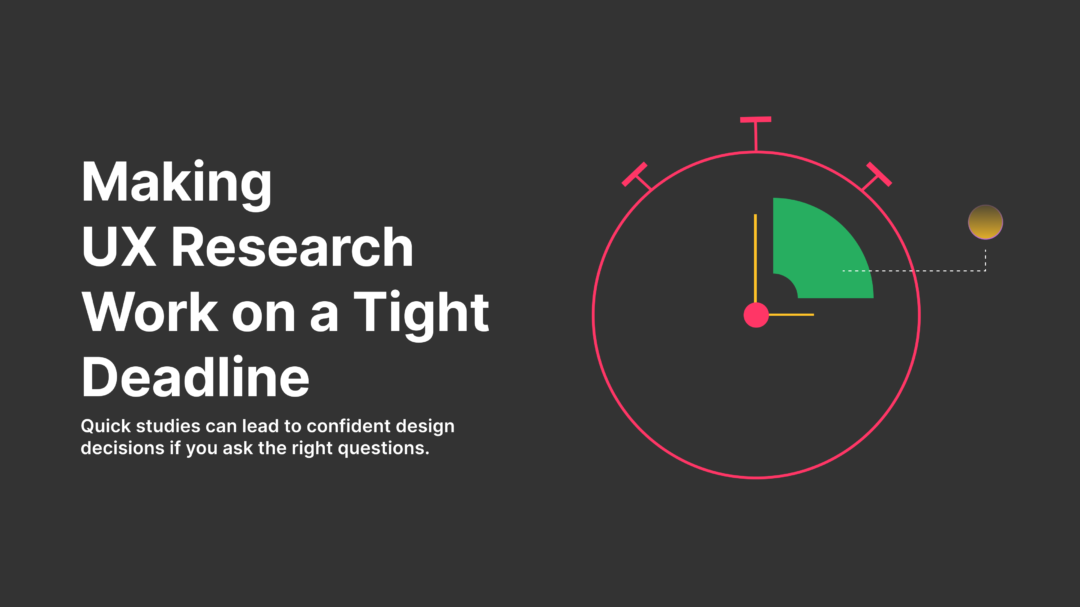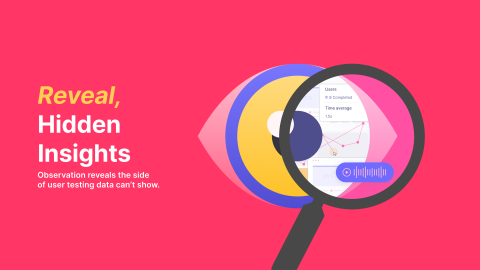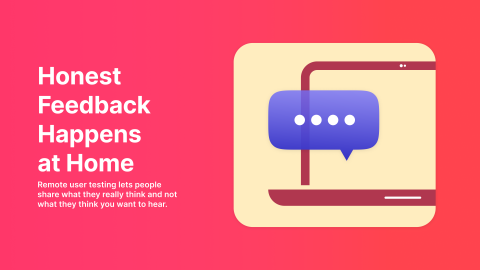In a perfect world, we’d have ample time and resources to run deep UX research. We would be as thorough as we want, recruit ideal participants, analyze in depth, and present polished reports. But real teams face tight deadlines, limited resources, and stakeholder pressure. Sometimes you are working with only a few days and a prototype or design that’s still in progress. And that’s perfectly fine.
In fact, it’s better to run UX studies before a product is finalized. It is easier to catch problems, test assumptions, and avoid building full systems on flawed foundations. A “quick UX study” may not sound ideal, but it will deliver valuable insights when done right. This is how I approach them when time is short:
Define a Clear Research Question
In general, when conducting UX research, staying focused is crucial. Otherwise, you risk collecting a lot of irrelevant data and wasting time trying to extract meaningful insights. When time is limited, that focus becomes even more important, because you simply can’t afford time-consuming mistakes. Avoid trying to learn everything at once (It is a good advice for any UX study actually). Instead of trying to test a full product or experience, isolate a critical part of the design that you need to get right. The more precise your research goal, the faster and clearer your path forward becomes.
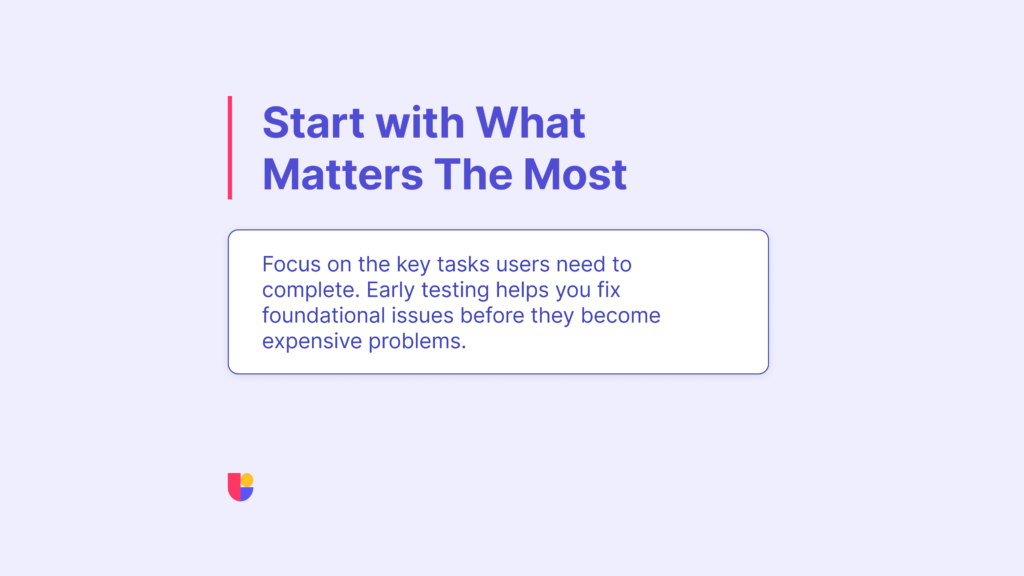
For example rather than testing all the user journeys, focus on the tasks that customers undertake the most. This will help you improve the experience for the majority of your customers early and fix issues cheaper compared to if the product was live.
- Note: if you do not know these tasks, inspect current business data or conduct a top task survey to find out. Testing early helps avoid problems that go unnoticed until they’re much harder to resolve.
Match Methods to Goals
Choose the method that best fits your objective:
- Card sorting helps uncover how users group and understand content. It’s great when you’re exploring how to structure menus, categories, or navigation.
- Tree testing helps evaluate whether your existing structure matches users’ mental models. It shows where people get lost or succeed.
- Usability testing is ideal when you’re evaluating specific interactions or flows. Watching participants complete tasks reveals friction, confusion, and where the design can be improved.
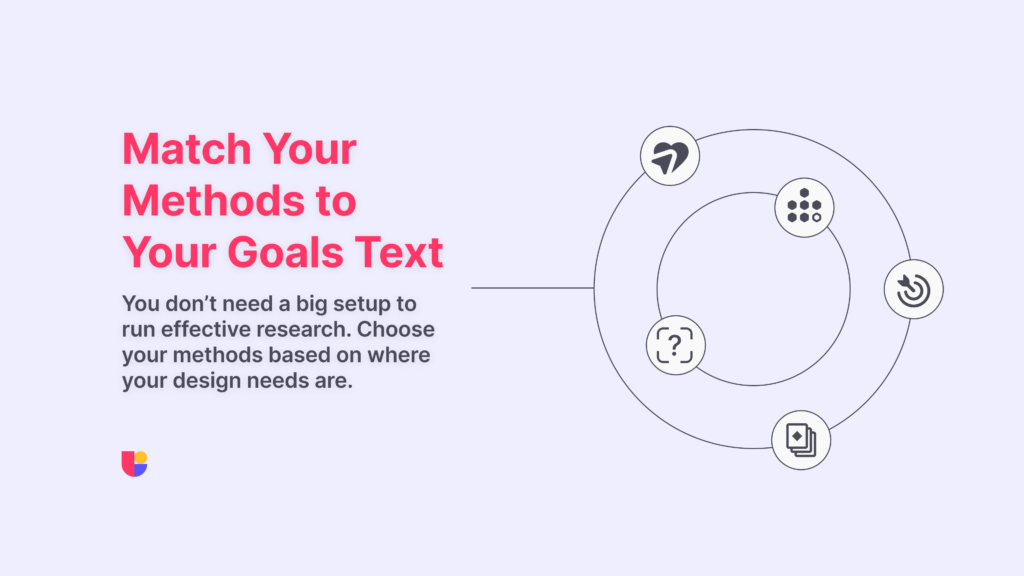
Keep in mind that there is no better time to start usability testing then “now”. We do usability testing as early as possible, even if everything we want is not ready. More testing you do before the final design, the less costly and time consuming problems you will encounter in the end, which will save you more time in the long run.
Interpret Patterns with Confidence
Quick studies typically use smaller samples. That’s okay. What matters most is recognizing repeated patterns and using them to guide design decisions. If multiple users hesitate in the same place or make the same error, that’s worth your attention. These aren’t just coincidences. They’re clues pointing to pain points. They could be design problems or other issues that might warrant a follow up study. Document them, prioritize fixing them, and use the study insights to make informed decisions.
Insights from even short tests help replace assumptions with real user input. We test to make product decisions with clarity and purpose. If your team is used to seeing larger sample sizes, give context. Share screenshots or video clips that show repeated user behavior. Even two or three examples can be powerful when the feedback is consistent.
4. Make Analysis Fast and Focused
Analysis doesn’t need to take days. Even with quick research, planning out the time to review results critically is essential. Put together your findings into groups, identify pain points, write a short summary and connect them using the supporting evidence. In the end, do not forget to provide potential solutions for your team to consider.
Don’t focus on creating polished deliverables. A single page with three main insights, a few strong quotes, and a short list of suggested changes can be more effective than a long report. What matters is that the findings lead to real improvements.
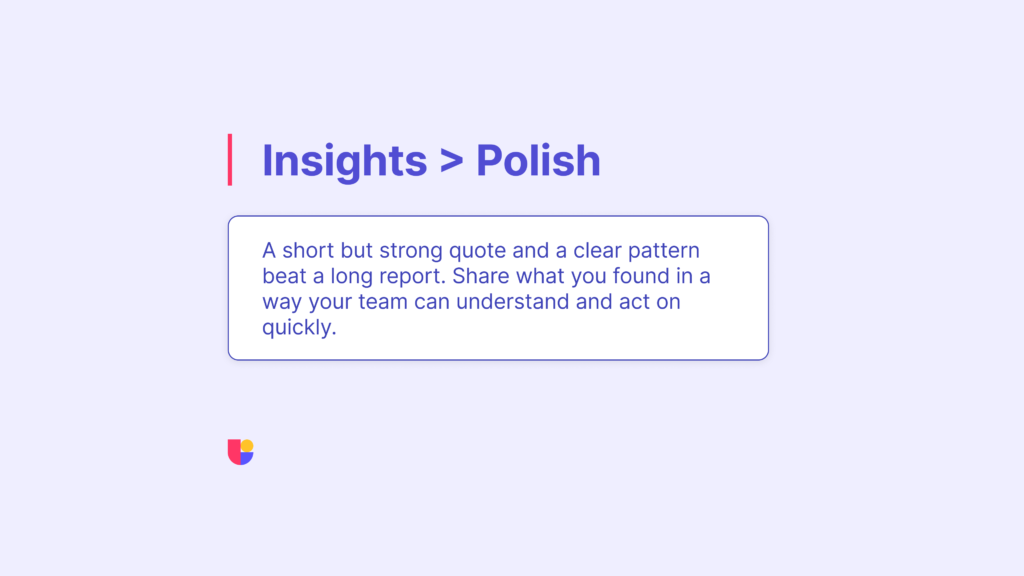
Short video clips (highlight reels), summarizing click tracking results or sharing heatmaps, and brief written summaries can go a long way in helping your team understand what’s working and what isn’t. Even a quick doc shared in Slack or Notion helps create alignment across teams. Speed doesn’t mean skipping sharing insights, it means making those insights easier to read, understand, and act on.
5. Start Fast with Templates
If you want to run fast UX studies more often, don’t start from scratch every time. Useberry’s professionally made UX research templates can help you launch with confidence.
You can also use these templates as a baseline to build your own structure and save your own research setups as custom templates. Templates help you start from tried-and-tested formats for different goals and repeat studies quickly with the same structure.
6. What to Avoid While Conducting Fast UX Research
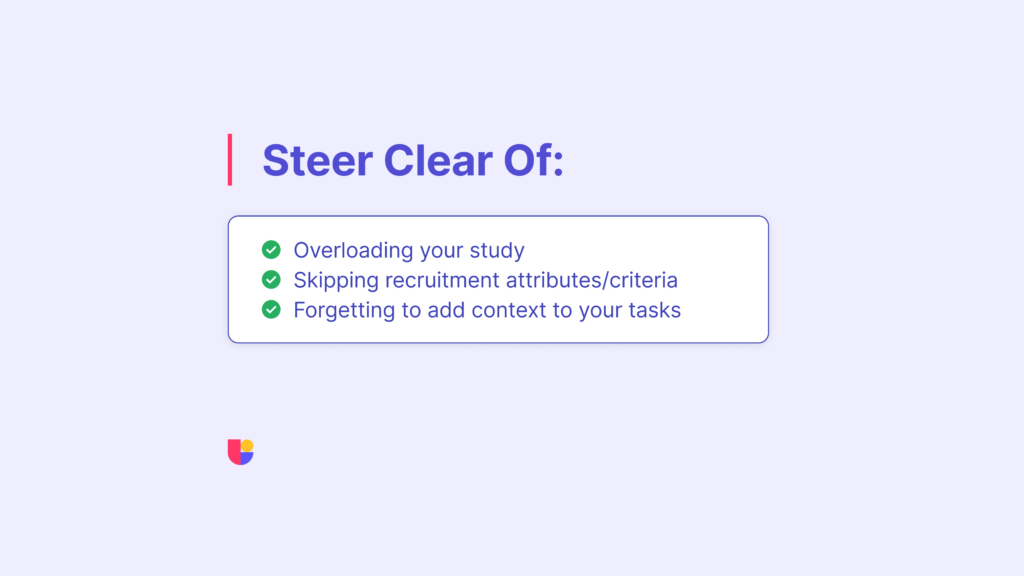
Fast doesn’t mean careless. A few common mistakes can undermine the value of even the most efficiently run study.
- Overloading your test: Trying to answer too many questions in one session can confuse participants and dilute your findings.
- Skipping recruitment criteria: Even with small samples, basic screening helps make sure your participants reflect your actual users.
- Forgetting context: Without an intro or framing of your tasks, users may misinterpret what they’re supposed to do.
Avoiding these mistakes helps you keep fast research credible and useful.
Final Thoughts
Quick UX studies may not answer every question, but they help teams stay in motion. They reduce risk, improve clarity, and bring user voices into the conversation when it matters most. By narrowing your focus, using the right methods, trusting patterns, and investing just enough time in analysis, you can uncover insights that truly guide product decisions.
UX research isn’t just about doing things the “right” way. It’s about doing the right thing for your team, your users, and your timeline. A quick UX study, can be meaningful and reliable when done carefully. If you’re short on time, don’t skip research, just approach it smartly! It can make all the difference.
Quick UX Research, Done Right
Tight deadline? Limited resources? Useberry helps to keep research smart, focused, and impactful.


